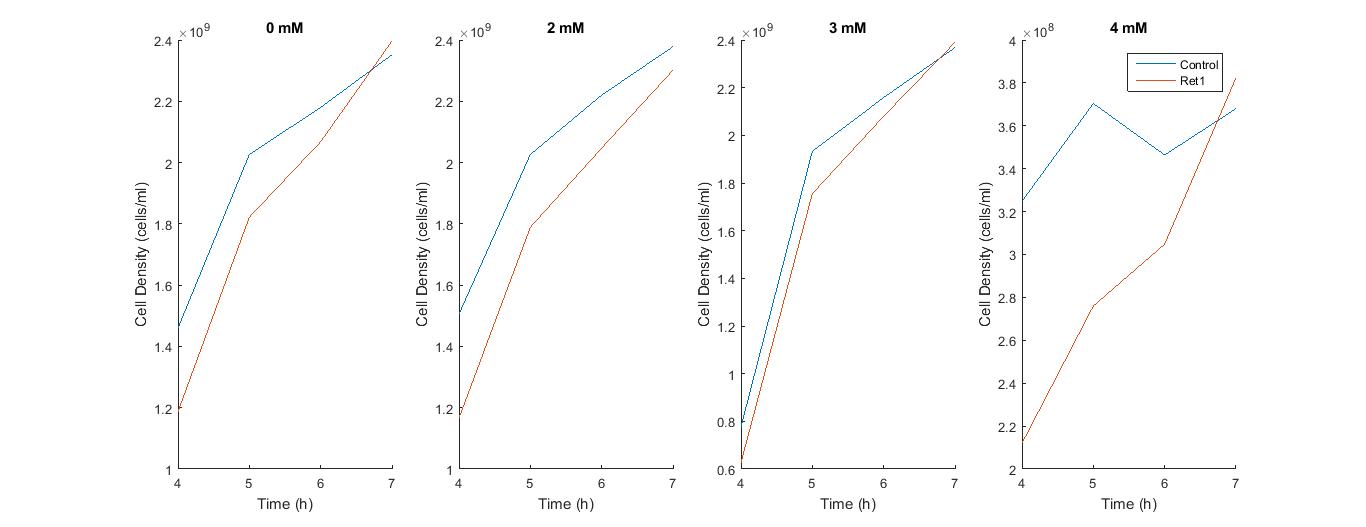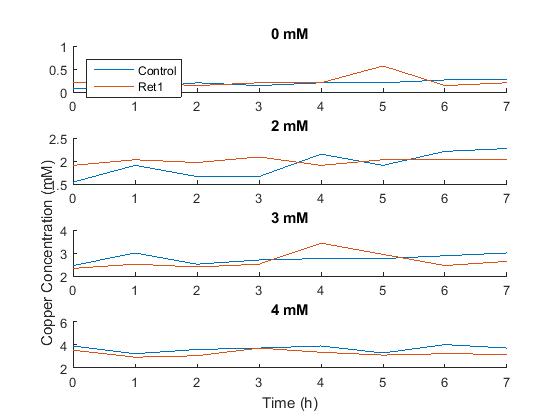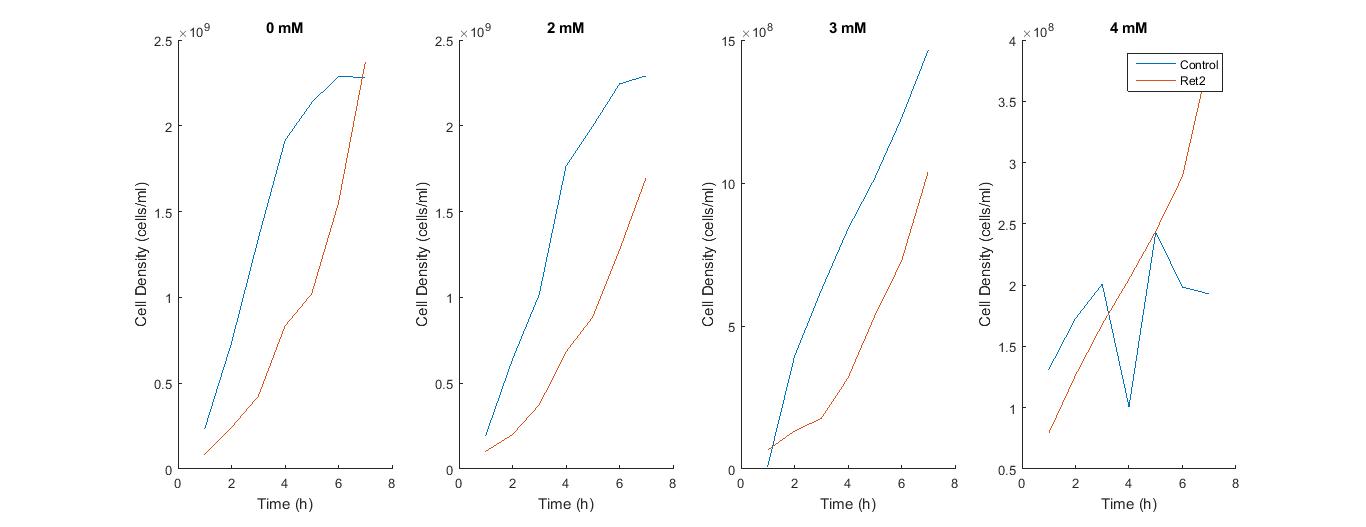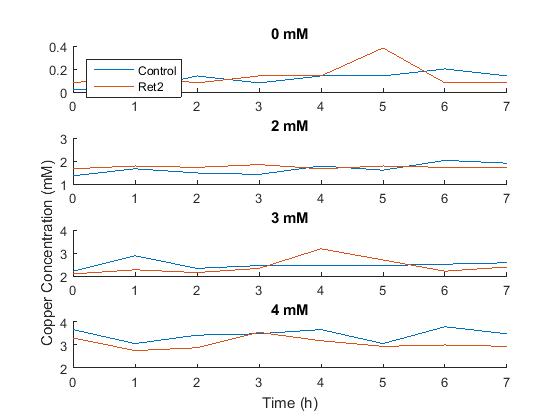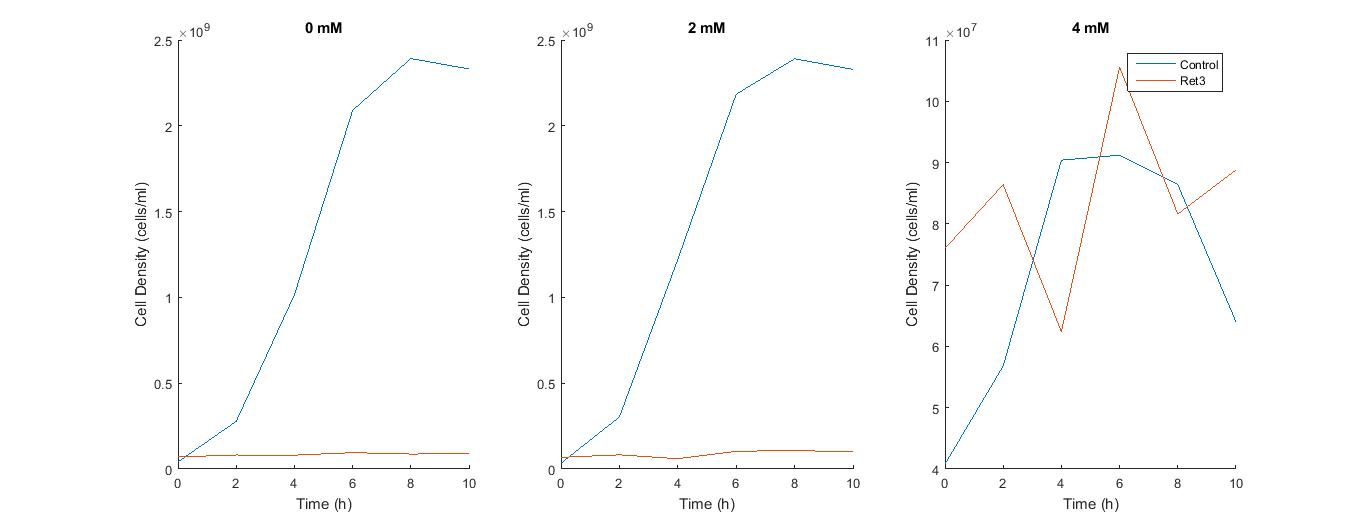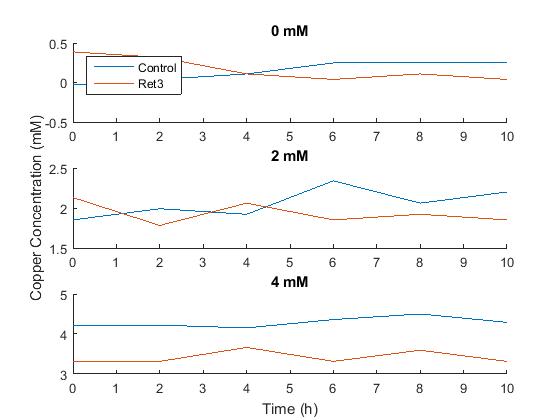Team:UMBC-Maryland/Results
Project Results
We genetically engineered several strains of E. coli in an effort to increase copper resistance and collection. We named each strain after our school's mascot, the Chesapeake Bay Retriever. Retriever 1 (Ret1) has been given the yeast metallothionein gene CUP1. Retriever 2 (Ret2) has been given the same CUP1 gene codon optimized for E. coli. Retriever 3 (Ret3) has been given the CUP1 gene codon optimized, fused with bacteriophage lambda receptor (LamB). Each strain was tested for cell density and extracellular copper concentration at different initial copper sulfate concentrations for 7-10 hours.Ret1 and Ret3 showed no significant cell growth, possibly due to the toxicity of the protein, or due to the stress placed on the cell from protein synthesis. The Ret1 strain showed no significant difference from control in either copper uptake or cell viability in copper. The Ret2 strain showed increased cell viability in high copper concentrations, but did not show any significant increase in copper uptake ability. The Ret3 strain showed very low growth most likely due to excessive protein load. However, it showed a marked increase in copper uptake as compared to the control strain.
In the future, we would like to adjust the expression of the LamB metallothionein fusion in order to increase the viability of the cell line. Eventually, we would like to insert a gasification gene in order to allow for the easy collection of copper laden E. coli.
